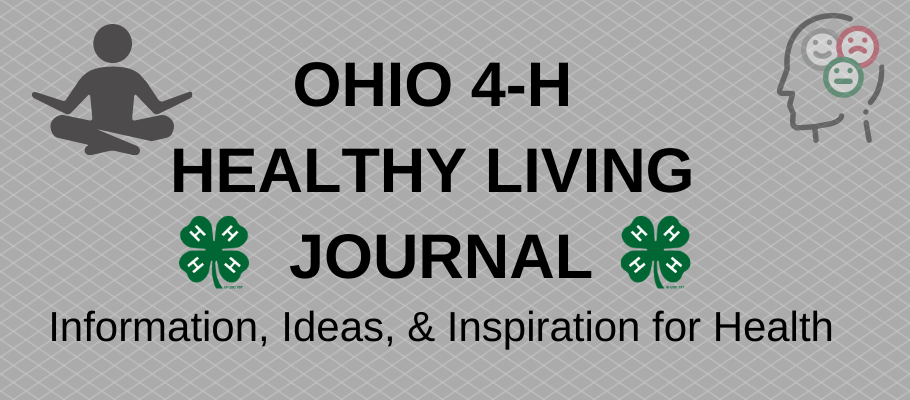by Theresa Ferrari, Extension Specialist, 4-H Youth Development
This month Ohio 4-H is focusing on topics related to equity. So it seems like a perfect time to address the concept of health equity.
What is health equity? The Robert Wood Johnson Foundation defines health equity as making sure that everyone has a fair and just opportunity to be as healthy as possible. That sounds simple doesn’t it – of course we would want everyone to be healthy.
However, it’s not that simple. There are many things that get in the way of realizing this lofty goal. When things get in the way of people reaching their full potential, we call these barriers inequities.  These inequities may be things like uneven access to social, economic, or educational resources.
These inequities may be things like uneven access to social, economic, or educational resources.
In their publication Creating the Healthiest Nation: Advancing Health Equity, the American Public Health Association notes that members of racial and ethnic minority groups, low-income populations, and members of the LGBTQ community often have difficulty obtaining the resources they need to be healthy. People in these groups are often exposed to more health risks such as poverty, violence, poor neighborhood conditions, and environmental health hazards. This is cause for concern because health inequities are reflected in differences in the quality of people’s lives; the rates at which they experience disease, disability, and death; the severity of disease; access to treatment; and in how long they live.
Here’s an example: We need look no further than the current situation of the coronavirus pandemic and vaccine distribution to have an example that illustrates the concept of health inequities. This situation was addressed earlier this week in an opinion piece in USA Today by Dr. Richard Besser and Dr. Julie Morita of the Robert Wood Johnson Foundation (and both formerly at the Centers for Disease Control and Prevention). In this article, titled “COVID-19 Vaccine Rollout Needs a Shot of Equity,” Drs. Besser and Morita pose the question “Is America’s vaccination effort reaching all of those who need to be vaccinated now?” Their answer: “From what we have seen, the answer is no.”
From the start, the coronavirus pandemic has made health inequities apparent. As Drs. Besser and Morita point out, while this pandemic is affecting every community, it is not affecting every community the same way. People of color and lower income households are disproportionately impacted in both rural and urban areas. People in vulnerable groups have suffered more severe versions of the disease, as a result of underlying health conditions. Black, Latino, and Native Americans — many of whom are front-line essential workers — are being infected, hospitalized, and dying at rates that far surpass their proportions of the population. Latino, Black, and Native American households also report disproportionate impacts of the coronavirus outbreak beyond the elevated health risks they face battling COVID-19, including household finances, jobs, health care, education, and internet connectivity.
For example:
- Can everyone easily access the appointment slots? Not when More than 20 million people in the USA lack broadband and high-speed internet access.
- Can everyone get to the locations where the vaccine is being administered? Not if you don’t live near a site and you don’t have a car.
- Is the vaccine available at times when people who are working are able to get it? Not if you are a front-line worker who can’t take time from work to get to a vaccine site and wait in lines.
Equity is not the same as equality. To equalize opportunities, those with worse health and fewer resources need more efforts directed toward improving their health. The image below and this short video helps to explain the difference.

One size does not fit all: Visualizing the difference between equality and equity (Image credit: Robert Wood Johnson Foundation)
What can be done? The Centers for Disease Control and Prevention note that health equity is achieved when every person has the opportunity to “attain his or her full health potential” and no one is “disadvantaged from achieving this potential because of social position or other socially determined circumstances.” To achieve health equity, “obstacles to health must be removed such as poverty, discrimination, and their consequences, such as powerlessness and lack of access to quality education.”
No one person acting alone can eliminate health inequities. The things that need to be done involve entire systems in our society, such as health care and education. For example, one of the steps identified by the Robert Wood Johnson Foundation to achieve health equity is to “change and implement policies, laws, systems, environments, and practices to reduce inequities in the opportunities and resources needed to be as healthy as possible.” This means eliminating the unfair social conditions affecting individuals and institutions that give rise to the inequities.
You can’t change something if you don’t know it needs to be changed. So, as always, the first step is to be aware that health inequities exist and to look at situations through this new equity lens, as we did above with COVID-19. Another thing we need to realize is that even if it is not a problem for us doesn’t mean that other individuals or groups have the same experience as we do.
I hope this post has helped you to understand more about health equity.
Subscribe: Don’t miss out on our health living posts. You can subscribe by clicking on “Subscribe” button in the lower right corner of your screen.
Resources:
American Public Health Association. Creating the healthiest nation: Advancing health equity. https://www.apha.org/topics-and-issues/health-equity
Centers for Disease Control and Prevention. Health equity. https://www.cdc.gov/chronicdisease/healthequity/index.htm
Robert Wood Johnson Foundation. Visualizing health equity: One size does not fit all infographic. https://www.rwjf.org/en/library/infographics/visualizing-health-equity.html
Robert Wood Johnson Foundation & Harvard T. H. Chan School of Public Health. (2020, September). The impacts of coronavirus on households, by race/ethnicity. https://www.rwjf.org/en/library/research/2020/09/the-impact-of-coronavirus-on-households-across-america.html
